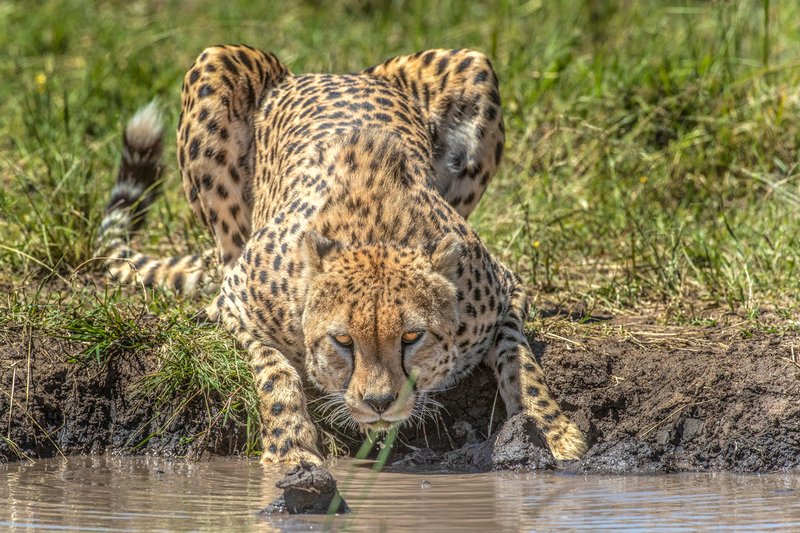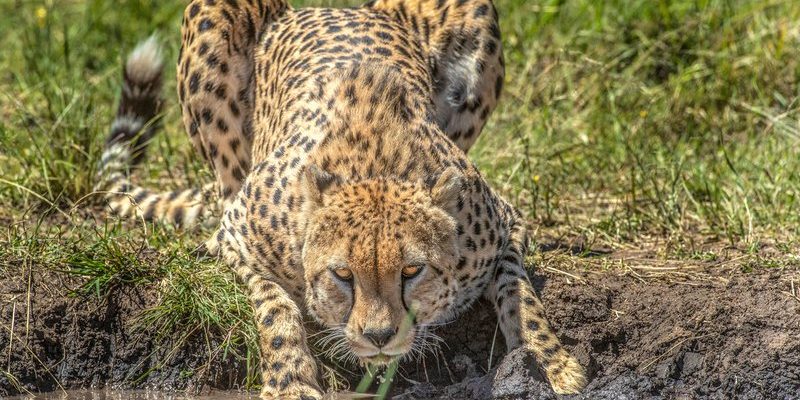
So, how do these incredible creatures manage to live in environments that can be unforgiving? From the scorching sun of Africa’s grasslands to the sparse vegetation of arid deserts, cheetahs have honed their skills over ages. Let’s dive into the methods they use to navigate their world, find food, and avoid dangers—because it’s not just about running fast; it’s about the whole survival game.
Physical Adaptations for Survival
Cheetahs are built for speed, but their physical adaptations extend far beyond just their long legs. Their muscle structure plays a crucial role in their survival. Unlike other big cats, cheetahs have a lightweight body and flexible spine, allowing them to stretch out while sprinting. You might say they’re like race cars, designed for speed and agility.
Their unique claws are not retractable like those of lions or tigers, which gives cheetahs better traction during high-speed chases. Imagine trying to run on ice with slippery shoes—hard, right? Cheetahs, however, grip the ground like a pro athlete on a track. Coupled with their large nasal passages that enable increased oxygen intake, they can maintain their speed longer while chasing prey.
Additionally, their keen eyesight is a game-changer. Cheetahs have excellent vision during the day, which helps them spot prey from long distances. Think of it as having a high-powered binoculars built right in. This ability, combined with their stealthy approach, means they can successfully hunt even in challenging terrains.
Finding Water in Arid Environments
In the wild, access to water can make or break survival. Cheetahs have adapted to these challenges by being savvy drinkers. Here’s the thing: they don’t need to drink as often as we might think. They get moisture from their food, mainly the prey they hunt.
When they do need to drink, they usually prefer areas close to their hunting grounds. Cheetahs often scout for waterholes that are frequented by antelope and other animals. By being strategic, they can drink and hunt simultaneously, optimizing their time and energy.
If water is scarce, they’ve been known to travel up to 30 miles to find it. It might sound exhausting, but in the wild, every sip counts. This resourcefulness showcases their adaptability and highlights how crucial it is for them to understand their landscape.
Hunting Strategies in Challenging Terrain
Hunting is where cheetahs truly shine, but doing it in harsh environments requires smart strategies. Unlike lions, cheetahs prefer to hunt solo or in small family groups. This means they need to rely on their skills rather than sheer strength or numbers.
Their hunting technique often involves stalking—they get as close to their prey as possible before launching into a sprint. When you watch a cheetah, it’s like a stealth bomber sneaking up on its target. They use the tall grass and any available cover to hide, patiently waiting for just the right moment.
When they finally sprint, it’s a burst of speed that lasts only about 20 to 30 seconds. You might think of it as a high-intensity sprint followed by a necessary recovery period. After their chase, cheetahs need to rest due to the energy they expend, which is why they often hunt in areas where prey is abundant.
Social Structures and Territory Management
While cheetahs might often be found alone or in small family groups, their social structures are fascinating. Males tend to form small groups called “coalitions,” which can help them secure and defend territory. This is essential in harsh environments where resources can be limited, and competition is fierce.
Female cheetahs are more solitary, needing to establish large territories that provide enough food for them and their cubs. These territories can stretch over vast areas, sometimes up to 500 square miles. By marking their territory with scent, they communicate with other cheetahs, letting them know when they’re encroaching on their space.
Interestingly, the camaraderie among male coalitions can give them an advantage when it comes to hunting and defending their territory. Think of it as forming a small team where they watch each other’s backs and work together, increasing their chances of survival.
Adapting to Climate Change and Habitat Loss
The environment is changing, and so are the challenges that cheetahs face. Habitat loss and climate change are major threats, leading to dwindling prey populations and fragmented territories. Cheetahs have been forced to adapt, which can be both impressive and sad.
Some researchers are studying how cheetah populations respond to these changes. For instance, they’ve found that some cheetahs will expand their range to new areas or adjust their hunting habits to prey on smaller animals when their preferred targets become scarce. It’s a testament to their resilience, but the reality is that it’s a tough battle against human encroachment.
Conservation efforts are vital to ensure that these magnificent creatures continue to thrive in the wild. Supporting wildlife reserves and creating awareness about their plight can help protect the habitats they rely on. Protecting cheetahs means protecting the wider ecosystem they inhabit.
Cheetahs are more than just fast animals—they are a testament to mother nature’s ingenuity. Their physical adaptations, hunting strategies, and social structures are all designed to help them survive in some of the harshest environments on earth. From finding water to navigating changing landscapes, cheetahs showcase resilience and adaptability that are truly inspiring.
As we admire their elegance and speed, it’s essential to remember the challenges they face in the wild. Understanding how cheetahs survive not only enriches our appreciation of these incredible animals but also reminds us of the importance of conserving their habitats. Together, we can work towards a future where cheetahs continue to roam the plains, embodying the spirit of survival in our world.

